MEGOHM METERS & MILLIOHM METERS

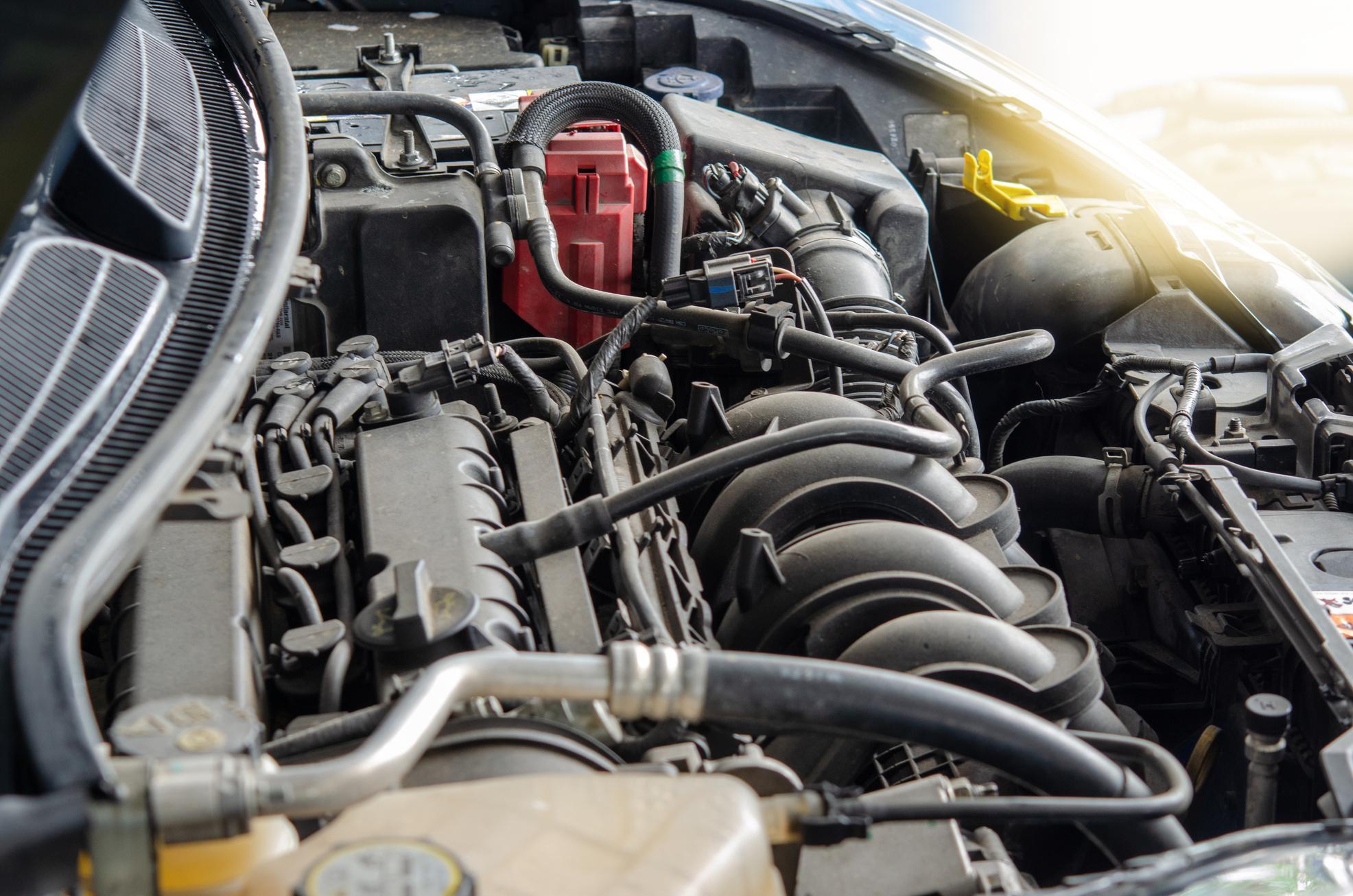
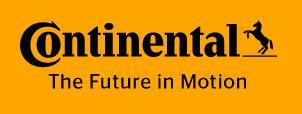

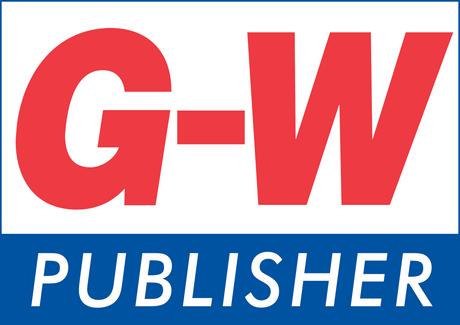

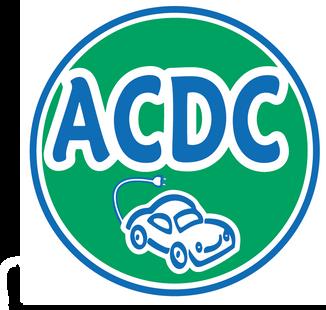
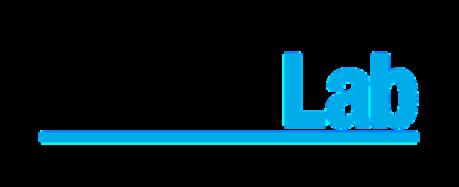
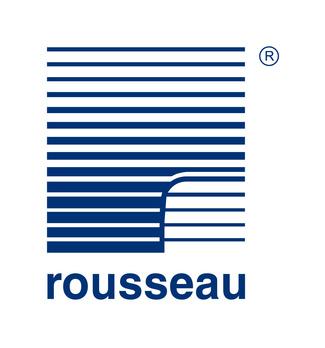
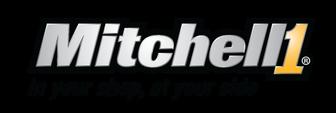
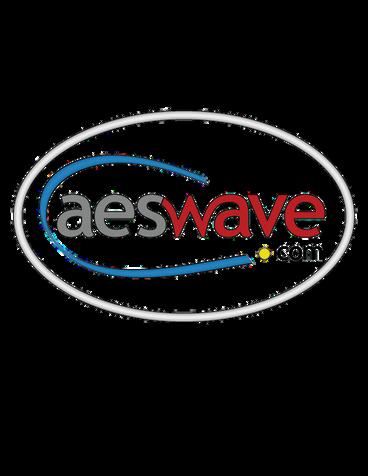
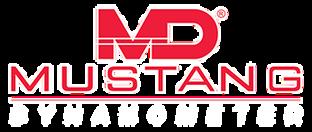
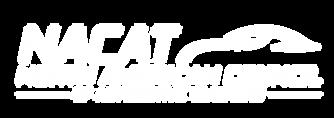

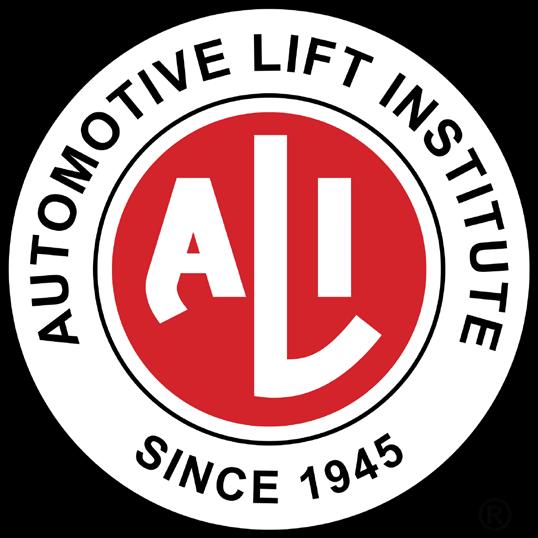
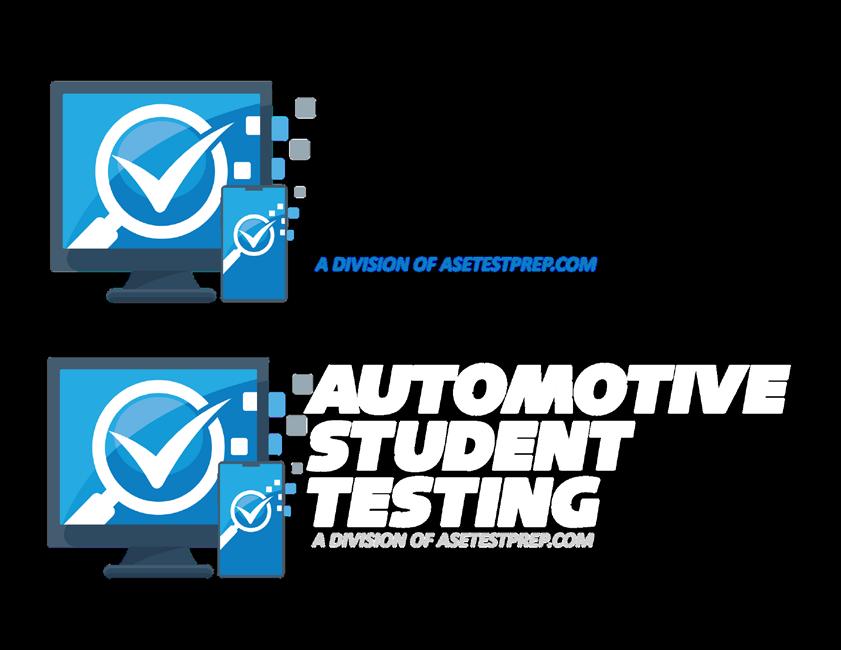
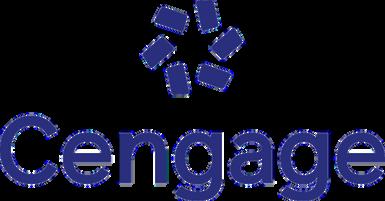






















NACAT President's Update
Tom Millard, Warren Tech
Getting to Know...Steve Gibson, NACAT Board Chair...Part IV
NACAT Sponsorship and Exhibitor Opportunities
VISION Hi-Tech Training & Expo Discount
Hybrid & Electric Vehicle Corner: What about Megohm Meters & Milliohm Meters
Curt Ward, Professor at Joliet Junior College
All Girls Auto Know ®
Cengage Jack Erjavec Innovative Instructor Scholarship
Save the Date: NACAT 2023 Conference & Expo
NACAT Mentor Program
Families of NACAT Committee
Free Automotive Design Course TechForce Foundation’s 2023 FutureTechs Rock Awards

NACAT Election Information
President 2021 - 2023
Tom Millard Warren Tech 13300 W 2nd PL, Auto Tech BLDG C Lakewood, CO 80228
Vice President / President Elect 2021 - 2023
Drew Barnes Vale School District 403 E Street West Vale, OR 97918
Secretary / Treasurer 2022 - 2023 Steve Tucker SUNY Delhi 2 Main Street Delhi, NY 13753
Business Advisor Sheri Hamilton 5950 North Oak Trafficway, Suite 201 Gladstone, MO 64118
Email: info@nacat.org
Office Phone: 816.766.1515
Thank you to those who have either joined or renewed their membership since November 1, 2022.




Joel Ground Enouch, AB
Blake Hudman Scipio, IN
Richard Jaramillo San Bernardino, CA
Robert Leonard Cinnaminson, NJ

Stan Moczulski Lancaster, SC
William Pattison Jacksonville, FL
Kathryn Ryan Burbank, IL
David Sullivan Seymour, IN
Michael Tatham Rio Rancho, NM
Happy New Year, 2023! It is the season when, like a Janus coin, we both look back and forward simultaneously. In my rearview I see changes to vehicle manufacturers and models, tools, products, and even my school’s administration. NACAT had 109 colleagues join our membership since January 1, 2022. We look ahead to continuing to grow our membership while continually evolving to best service educator needs. We also look forward to both the upcoming 2023 VISION Hi-Tech Training & Expo and the 2023 NACAT Conference, which will be held July 10th – 13th at San Jacinto Community College in Houston Texas.
Your NACAT board has discussed and are in the process of developing a Mentor Training Opportunity that will be available to any and all NACAT members, whether you are new to teaching, only have a few years of experience, or are a seasoned veteran. On April 20, 2023, we will be hosting sessions, and we are looking forward to meeting, sharing, and discussing harships, accomplishments, and goals. If you are an experienced educator and would like to volunteer to be part of this process, please let me know and I can share your information with the board and the mentor training crew.
The 2023 VISION Hi-Tech Training & Expo is going to be held March 2nd – 5th in Overland Park, Kansas. If you need the latest and greatest trainings available, this is a very helpful conference and is very similar to our NACAT conference. Please check out the Educator Think Tank classes available. NACAT will have a booth so we may share information on the upcoming NACAT Conference while meeting new, old, and future friends. If you make it to Overland Park, please come by our booth. I would be honored to meet with you.

We have recently organized a Families of NACAT Committee, and there is a FACEBOOK group for Families as well. Your Families of NACAT Chair is Tamber Nellinger, and the Vice Chair is Bonnie Millard. The Families of NACAT will be looking for family activities for the 2023 conference, as well as future conferences. Please wish them luck in helping expand our family activities.
The biggest challenge I see for all of us is the change of mind set from I.C.E. (Internal Combustion Engine) to Hybrid and EV vehicles and training. The most important subject, in my opinion, is the diagnosis and training we give our students so they are more prepared for the future, as we ALL teach our students about the importance of attendance, accountability, and great citizenship.
NACAT’s annual elections are coming upon us and we will have openings for you to join the new and exciting NACAT Board of the future. Once again, this year the elections will be administered through the NACAT site. We hope to finalize the elections in mid-April.
I am looking forward to all the new changes and the upcoming events of this year, and I look forward to seeing you at the VISION and NACAT conferences later this year.
Chairman of the Board
2022 - 2023
Steve Gibson
K&N Engineering
1455 Citrus Street Riverside, CA 92507
Board Member 2021 - 2024
Louie Longhi Mechanics Local 701 Training 450 Gunderson Drive
Carol Stream, IL
Board Member 2022 - 2025
Martin Duvic Louisianna DOTD 7686 Tom Drive Baton Rouge, LA 70805
Ed Martin Pickens Technical College 500 Airport Blvd Aurora, CO 80011
Ron Morris Guilford Technical Community College 6012 W Gate City Blvd Greensboro, NC 27302
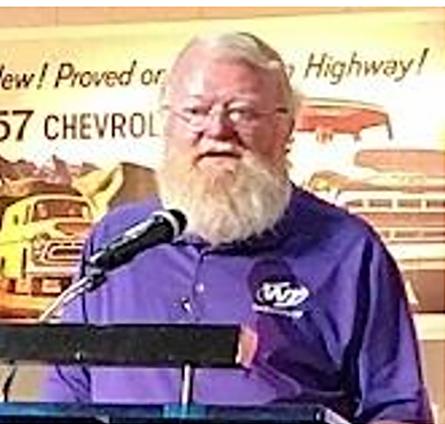
Todd Richardson
Utah State University Eastern 451 East 400 North Price, UT 84501


The engine sat in that same spot, untouched, for the next 8 years.
I had no idea at the time what events were about to unfold over the next 8 years. It was the beginning of 2002 when I started the engine rebuild. I had just graduated from college the summer before. I had been working two jobs, full time during the day at the local speed shop in town, and in the evenings after work I was cleaning the shop that I had worked in since high school. I had been looking to make the “career” move to a “real job” and the opportunity finally came that spring. It wasn’t an automotive industry job, I was working for a youth services nonprofit organization managing volunteers in a territory or “district”. It was an uphill battle and I struggled. I could manage the people very well. Problematically, I discovered that my predecessor had falsified much of the membership in the district, and we only had 25% of the members we had on paper. Additionally, growth was very hard to create due to my district being comprised from a lower socio-economic area. I did what I could to support the volunteers in my area, who had always been the “red haired stepchildren” of the organization. They really appreciated having someone who was there to listen to their needs and could provide guidance and support. I am still friends with many of these people today. But growing the membership just to get to 50% of what we “had” on paper was next to impossible.
In the fall of 2002, I was also faced with a relationship with my childhood sweetheart ending. We were one of those “meant to be” couples who had known each other since we were kids. We were engaged to be married and dealing with the stress of having everything unravel pushed me into depression. It was hard for me to cope with things, and my performance at work began to suffer. On top of everything else, the organization I was working for was in financial trouble. I was let go at the end of spring 2003. I had to move back in with my parents, but they had just decided to retire. They were going to be moving out of state the following year.
Fortunately, I was able to get back on my feet and follow my heart. I landed a job in the fall of 2003 at Factory Motor Parts, an AC Delco distributor. I was very happy to be back in the automotive industry and I knew that was where I belonged. Factory had an accessories line, and I found an opportunity to grow in this area since there was only one person running the whole program. We primarily sold truck accessories like hitches, bedliners, LED taillights, and a bunch of “trinkets and trash”. We also sold K&N air filters. I came home from work one evening in the spring of 2004 to a message on the answering machine from K&N. I had answered a job ad K&N had placed back when I was job hunting in the summer of 2003, and they were finally responding. I had one phone interview and 2 in-person interviews after which they sent me a job offer. I started at K&N in June 2004 in a Customer Service position, but advanced quickly. I was moved to a Tech Support position that fall, and then the department lead in January 2005. I also began training our department staff and new hires, and was promoted to the head of training for the department in January 2006. But like so many people, I was living paycheck to paycheck making just enough money to get by. I was still going back to the shop I started at every evening to clean to make some extra money. The Camaro had been at the shop this whole time, as I didn’t have any other place to store it. I would occasionally push it up into the wash bay and hose it off to try and keep it clean and appearing decent. Finding the extra money to resume the engine rebuild was next to impossible.
Continued on Page 8
In August 2006 I was in a major car accident. I hit a tree at a high rate of speed, suffered a depressed skull fracture (think of cracking a hard-boiled egg on the larger end) and was in a coma for 2 days. I was rushed into emergency surgery to relieve the intercranial bleeding, repair the skull fracture, and remove pieces of skull that had penetrated my brain. While in recovery from the brain surgery, I lost circulation in my right arm. The doctors ran a roto-rooter type device through my veins and restored circulation, but 12 hours later I lost circulation again. The decision was then made to amputate my right arm. I emerged from my coma in the recovery room after my amputation, faced with a new set of challenges ahead. By nothing short of a miracle, I recovered quickly. I was back to work part time at Halloween and full time by the end of November. I did have some level of brain damage from the brain injury: some of it measurable, some not. Fortunately, I had no memory loss other than 1-1/2 hours before the car accident. But in order to be able to race the Camaro again, I would have to find ways of driving and controlling a race car with just one hand.
In 2009, I was moved to a new position at K&N. I was put in charge of developing an outreach program targeting automotive programs in schools. The goal was to train students on how K&N products work so that they take that knowledge with them into their automotive career as technicians. This is what led me to discover NACAT. If I could also train the instructors with the same information, the number of students we could reach as a company would grow exponentially. I really enjoyed this program since I connected with it personally in so many ways. The conversations I had didn’t just revolve around product knowledge. Many students wanted to know how I ended up in my career. Many were also unaware of all the different career paths their education could take them to. All of these discussions were made possible by our common interest in working on cars and making them more powerful. I stayed in this position for the rest of my tenure at K&N.

I hadn’t been participating with the car club much the past few years due to everything happening in my life. In 2009 I learned that Charlie had an aggressive form of cancer and treatment wasn’t having any success. I gave him a call to go by and see him, since it had been several years. Chemotherapy, radiation, and the cancer was making him wither away. He was a fraction of his former weight; it was a tough reality to deal with. During my visit the conversation came up about the Camaro. I told him that I did still want to put it back together to be able to race again. Charlie told me that it would be best if I took all the engine parts home since he knew he didn’t have much time left and he wasn’t in a condition to help me anymore. This was sad, but I realized it was for the best. I didn’t want the engine to disappear when Charlie passed; his next of kin wasn’t aware of any of the arrangements he and I had. So Charlie opened up the garage and backed his truck out, and I backed my truck into the driveway. The engine block was still sitting in the corner where I had left it in 2002. I found a rag and cleared the dust off the bag covering the block, then wheeled it out to the center of the garage and unwrapped it. I had done a good job sealing everything, the engine block was absolutely spotless. No dust, not a single hint of rust. It was unbelievable. The engine stand was exactly the same height as my tailgate, so I wheeled the stand over to the truck and Charlie had just enough strength to help me slide it off the engine stand into the bed. The rods and pistons were in the cabinet above where the engine had been, I loaded those as well, along with the cylinder heads and camshaft which Charlie had inside his gun safe. After everything was loaded, I gave Charlie a hug and made him a promise that the Camaro would run again, no matter what it took. I realized I wasn’t the owner of the Camaro, just its caretaker, and just like I was given a second chance at life, I owed the Camaro a second chance at life as a race car as well. As I left that evening, it was the last time I ever saw Charlie. I was in Las Vegas for the CARS/NACE Expo in October of 2010 when I got the call from Mike that Charlie had passed. Now I just needed to figure out how to keep my promise.
Continued on Page 11
New Exhibitors
Pasadena Convention Center
Pasadena, Texas
July 10-13, 2023
Questions? Call 816-766-1515
heather@nacat org
Registration Open
First Time Attendee Meeting
Opening General Session & Keynote
Exhibitors Setup
Welcome Reception
Exhibitor Setup
Training Sessions
Refreshment Break*
Lunch & Exhibitors*
Lunch*
Refreshment Break*
Valve Cover Races*
Family BBQ*
Training Sessions
Training Sessions
Cocktail Reception
Dinner and Awards
Floorplan subject to change updated 1.23.2023

Allied Members - $750 per booth before March 31, 2023; $850 afterwards. Non-Members - $850 per booth before March 31, 2023; $950 afterwards. Each booth includes one representative. Additional representatives are $175 each (includes Welcome Reception, Refreshment Breaks on Tuesday, Lunch on Tuesday, Valve Cover Races and Family BBQ)
All sponsorships include signage, website and social media recognition
F i r s t - T i m e A t t e n d e e M e e t i n g : M a k e a l a s t i n g i m p r e s s i o n w i t h t h e f i r s t t i m e a t t e n d e e s b y s p o n s o r i n g t h e i r m e e t i n g a n d b e i n g a b l e t o n e t w o r k $ 7 5 0
W e l c o m e R e c e p t i o n S p o n s o r s h i p : T h i s k i c k o f f e v e n t p r o v i d e s a n o p p o r t u n i t y t o m e e t a n d g r e e t t h i s y e a r ' s a t t e n d e e s $ 2 , 0 0 0
O p e n i n g G e n e r a l S e s s i o n a n d K e y n o t e : H a v e y o u r b r a n d i n f r o n t o f a l l t h e a t t e n d e e s a t t h e o p e n i n g g e n e r a l s e s s i o n a n d k e y n o t e $ 7 5 0 R e f r e s h m e n t B r e a k s : K e e p t h e e n e r g y g o i n g b y p r o v i d i n g a t t e n d e e s w i t h r e f r e s h m e n t s d u r i n g t h e i r b r e a k $ 2 5 0 e a c h e a c h 9 a v a i l a b l e L u n c h S p o n s o r s h i p s : L u n c h i s a g r e a t t i m e t o t a k e a d v a n t a g e o f t h e o p p o r t u n i t y f o r a d d i t i o n a l e x p o s u r e f o r y o u r c o m p a n y $ 7 5 0 e a c h 4 a v a i l a b l e F a m i l y B B Q : T h i s B B Q i s a g r e a t o p p o r t u n i t y t o g e t y o u r b r a n d s e e n b y a l l a t t e n d e e s p l u s t h e i r f a m i l y f o r a d d i t i o n a l e x p o s u r e $ 1 , 5 0 0 V a l v e C o v e r R a c e s : W h a t ’ s b e t t e r t h a n f r i e n d l y c o m p e t i t i o n ? W h e n y o u r c o m p a n y i s t h e o n e h e l p i n g s p o n s o r i n g t h e e v e n i n g , i t w i l l b e a n i g h t t o r e m e m b e r $ 1 , 5 0 0 C o c k t a i l R e c e p t i o n : S p o n s o r t h e c o c k t a i l r e c e p t i o n a n d h a v e y o u r l o g o f e a t u r e d o n t h e d r i n k t i c k e t e v e r y o n e r e c e i v e s a n d m a k e a t o a s t t o a l l a t t e n d e e s ! $ 1 , 5 0 0
D i n n e r a n d A w a r d s : T h i s s p e c i a l e v e n i n g a l l o w s y o u t o j o i n y o u r c o l l e a g u e s a n d c u s t o m e r s i n a r e l a x e d s e t t i n g T h e A w a r d s D i n n e r c e l e b r a t e s t h o s e i n d i v i d u a l s a c h i e v i n g e x c e l l e n c e i n t h e a u t o m o t i v e s e r v i c e i n d u s t r y Y o u r l o g o w i l l a l s o b e i n c l u d e d i n t h e e v e n i n g ’ s d i n n e r p r o g r a m g u i d e $ 2 , 0 0 0
Schedule subject to change * - exhibit times
Lanyard Sponsorship: Have your logo seen throughout the annual meeting as attendees network and attend training Your company’s logo’d lanyards will be provided to our team in advance of the conference $1,500
Conference Tote Bag Sponsorship: Your provided bags will be presented to each attendee at registration Have your branding throughout the event as attendees visit exhibits, attend training and network $1,500
Mobile App Sponsorship: Be at the attendees fingertips with this unique opportunity Your logo and recognition will be included in the mobile app, as well as website and social media recognition Don’t miss this opportunity to have your company seen each time an attendee opens the mobile app to and event information and their handouts $2,000
Notepad Sponsorship: Attendees gain a lot of information and knowledge during the conference Your provided logo’d notepads are utilized throughout the event, as well as when attendees return back to their school The exclusive sponsor will provide their notepads/notebooks to be included in registration packets for each attendee $250
Pen/Highlighter Sponsorship: Your provided logo d pens will be included in each attendee registration packet Sure to be utilized through the event, this long-use item returns home with the attendees as a reminder of your support of their training endeavors $250
Email Banner Ad: A banner ad in a NACAT email campaign $250 each 5 available
Overall Conference T-Shirt Sponsor: Have your logo on the sleeve of the 2023 NACAT Conference T-Shirt
$1,500
Logo on T-Shirt: Your logo will be on the back of the 2023 NACAT Conference T-Shirt and will be present every time someone wears it for branding that can last decades! $250
Transportation: Get featured on the transportation to and from the school/convention center for the entire day $2,000 3 available
Lifting It RightTM is the world’s best-selling lift safety training program. It’s the industry standard on how to properly operate any vehicle lift and is the only program developed and backed by the technical experts at the lift safety watchdog Automotive Lift Institute (ALI) and leading lift manufacturers.



Millions of students, professional technicians, and at-home mechanics have learned from Lifting It Right how to lift a car, truck, or SUV without causing injury or property damage. The interactive course teaches how to spot, lift and lower a vehicle, maintain load stability, and more.
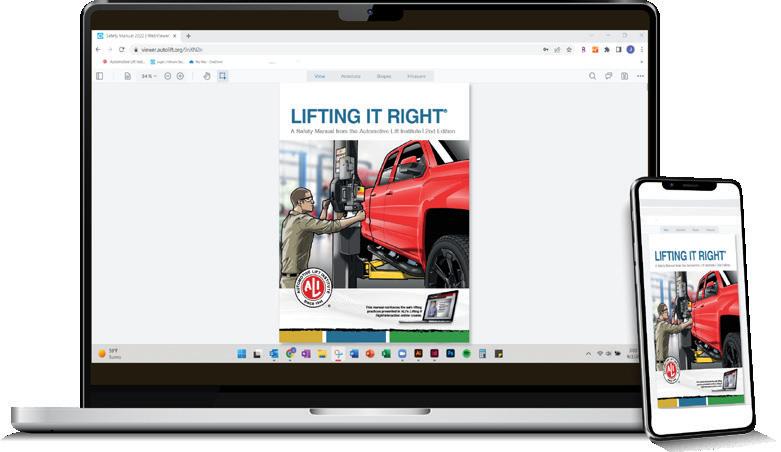
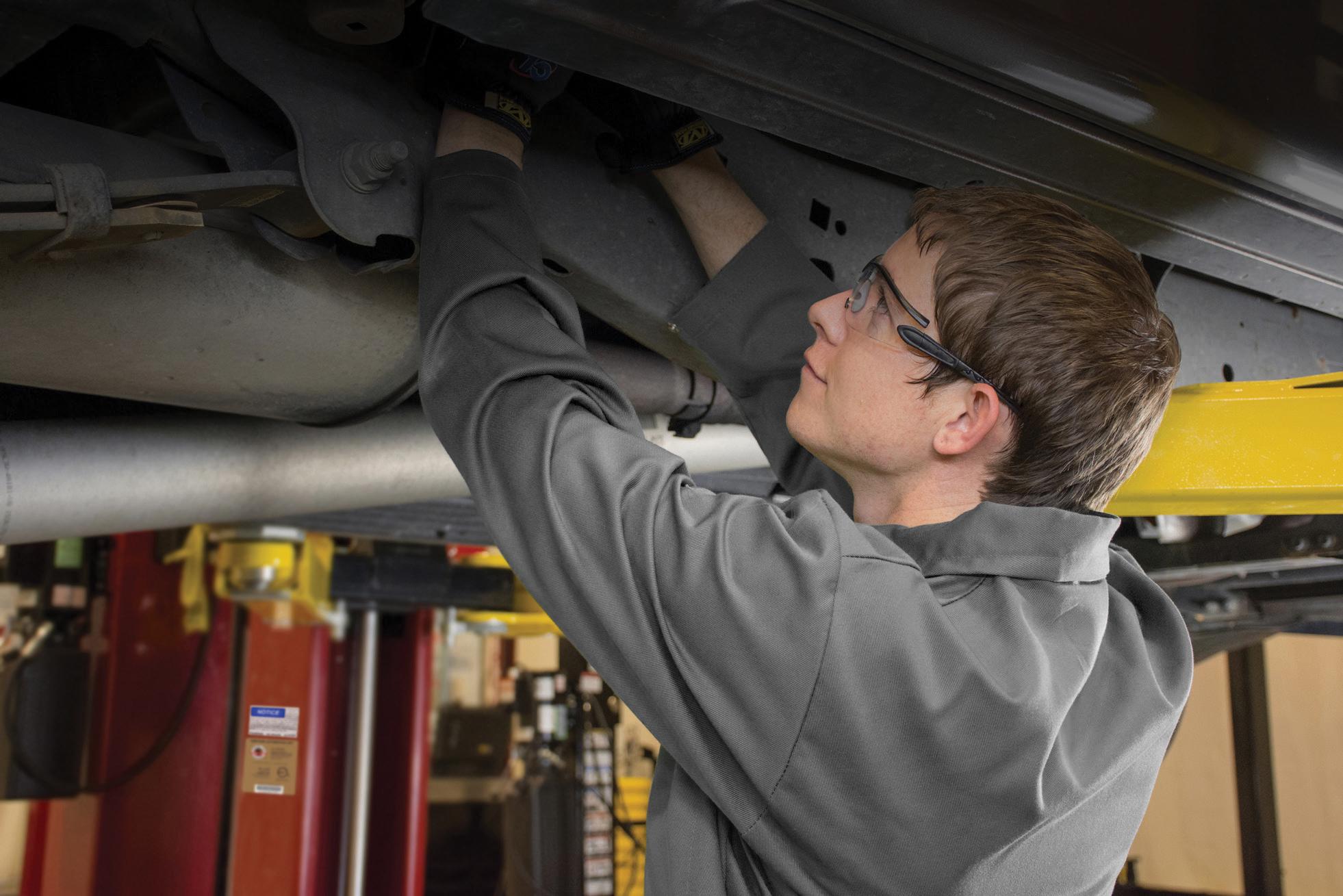
With an annual subscription, you can offer the interactive course to all your students. Most students complete it in about an hour and will receive a certificate of completion after passing the final exam.
Lifting It RightTM safety manual second edition completely updated and expanded. Order today at autolift.org/store.

It took a full 3-1/2 years to put the Camaro back together to a race-ready condition. Many items in the rulebook had changed regarding safety, and it took a lot of work and creativity to bring the car up to code. I decided to tackle the engine first and get the car to where it would actually crank and run. I upgraded some parts like the connecting rods and rod bolts and removed the crankshaft from the block to have it rebalanced for the new rods. I had been very fortunate to make a lot of industry connections while I was at K&N, and was able to get a lot of the items I needed at a substantial discount. Over the course of many weeknights and weekends I got the engine assembled. It began to look exactly like I remembered it, and I couldn’t wait to hear it again. I also had the transmission rebuilt, driveshaft rebalanced, replaced all the wheel bearings, installed new brakes, master cylinder, and rewired the car. In September 2011 the engine came to life again, the first time it had run in almost 10 years. But there was still a lot of work that needed to be done.



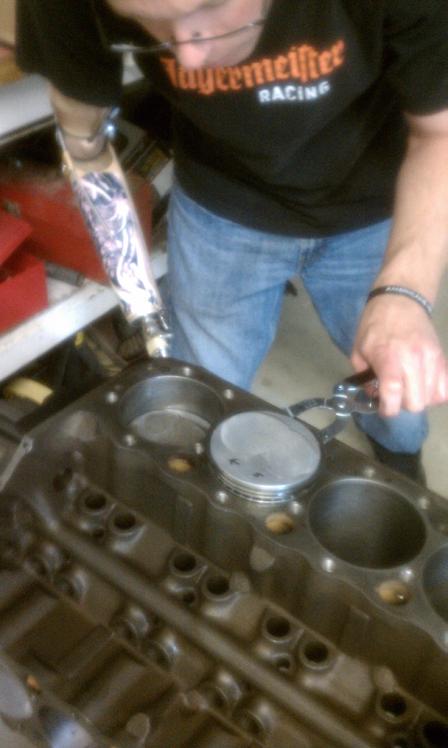
In addition to the safety items that needed to be updated, I also had the challenge of figuring out exactly how I was going to drive the car with just one hand. I do wear a prosthetic arm, but when you are tightly strapped in a racing seat with a 5 point harness it doesn’t offer much help. I had three main challenges: how I was going to shift the transmission, how I was going to deploy the parachute, and finding ways of doing each of these actions without taking my hand off the steering wheel. I also wanted each solution to be low cost and reliable. I started researching shifters and realized there wasn’t anything commercially available or affordable that did what I needed. The Camaro had used a ratchet-style shifter mounted to the transmission tunnel in the past. I brainstormed a bit and came up with an idea – why not relocate the shifter to the floorboard and shift it with my left foot? I designed a custom toe loop that I could put my foot through to push and pull on the shifter, and a friend who is a fabricator made it for me out of steel. On the parachute, I needed a way of pulling on the control cable, so I decided to try a power door lock actuator that I could activate using a switch on my switch panel, which was mounted directly behind the steering wheel. I could extend my finger and hit the switch to deploy the parachute, without ever letting go of the wheel.
In November 2013, the Camaro rolled off the trailer onto the dry lakebed at El Mirage for the first time in 12 years. It took a long time to get through tech inspection since the car hadn’t been entered in an event in so long. Mike was now running his own car again, so I recruited another member of the car club who was familiar with helping run a car to come and give me a hand. It was late in the afternoon by the time I was ready to make a run, but the car ran and drove under its own power that day for the first time since 2001. Unfortunately, the run didn’t last very long. When it was time to shift from first to second, the torque angle of my foot pushing on the custom loop I had designed actually bent the lever of the shifter, preventing me from reaching second gear. I had no choice but to turn out.
Continued on Page 13

New products to offer you intuitive solutions including EV technology


Continued From Page 11
When I got back to my pit area, Mike and all the other car club members who were present came over to congratulate me and to find out what had happened. One by one, they looked at the shifter, but no one really had any ideas or suggestions to change it or to make it more reliable and unbreakable. One of the club members, Gary, was a professor of engineering, and was very intrigued by the foot shifter idea. Gary suggested that perhaps I could turn this into a design competition for his engineering class. This was a fantastic idea and I couldn’t wait to see what his students could design! Gary and I designed the competition and outlined my requirements for the shifter, and his students had 2 months to come up with a design. I would evaluate the submissions and select the best one, purchase materials, and the student would then make their design. In addition, the winning students name would be on the car the next time it ran. After 2 months, I received 12 different shifter designs to evaluate. The winner I selected actually reused the original ratchet mechanism from the old shifter which kept cost down, but they designed a new lever, to replace the bent one, that had an integrated pedal, which moved the inertia forces from my foot and would keep the lever from bending. I purchased the materials, dropped them off at the engineering lab at Gary’s school, and foot shifter number 2 came to life. I got it bolted in to the Camaro very easily since all the attachment points remained the same. I really enjoyed having student involvement in my racing hobby, and the students really enjoyed the project.

Due to more life circumstances, I wouldn’t have the chance to race the Camaro again for another 2 years. In May 2015 I was attending an end of year awards celebration at one of the local high schools I had built a relationship with at K&N. I was there to present a scholarship to one of their graduating seniors. I had the scholarship check and my printed speech notes in a folder, and when I opened up the folder and took these items out there was a picture of the Camaro directly behind them. An automotive instructor, Wendy, from the local community college happened to be sitting right next to me, saw the picture, and said “Is that El Mirage?” We struck up a conversation after my presentation, as it turned out she also went to El Mirage, mostly as a spectator, but she always took a group of her students with her to expose them to Land Speed Racing. The more we talked, she said it would be really cool if she could bring her students by to see my Camaro the next time I had it at El Mirage. I countered with another idea. I suggested “Would they be interested in helping me run it?” I was in need of regular help, I couldn’t race by myself, you have to have a support crew, and I was intrigued at having another opportunity to expose students to the sport of Land Speed Racing as participants, not just spectators. Wendy loved the idea, and we set up a plan. It would be another year before I was able to take the Camaro to El Mirage again, but when I did Wendy and her students would be there to help. I really enjoyed working with her students, teaching them about the car, the safety gear, and race procedures. It was extremely rewarding. Even if the group of students changed, I could teach the new ones quickly and get them up to speed, and the returning students would fill in the gaps. They were learning the sport and what it takes to run a race vehicle and having a blast doing it. More than that, they realized what a great responsibility they were being trusted with, that their actions directly affected my safety, and that I had confidence in their abilities. It was rewarding for me to see them learn and grow, and it was rewarding for them to have that opportunity given to them. Together with Wendy and her students’ help, I was able to make the Camaro’s first full pass down the racecourse 15 years after its last successful run and get reacclimated behind the controls of a race vehicle. We have tackled the 100, 110, 120, 130, 140, 150, 160, and 165 mph barriers and are still looking to go faster as I continue to tune on the engine. For most of these students, the only time they have seen a pushrod engine, a distributor, or a carburetor is in a picture. I enjoy explaining to them how this “old stuff” works and how it relates to what they see in modern vehicles.
Continued on Page 15

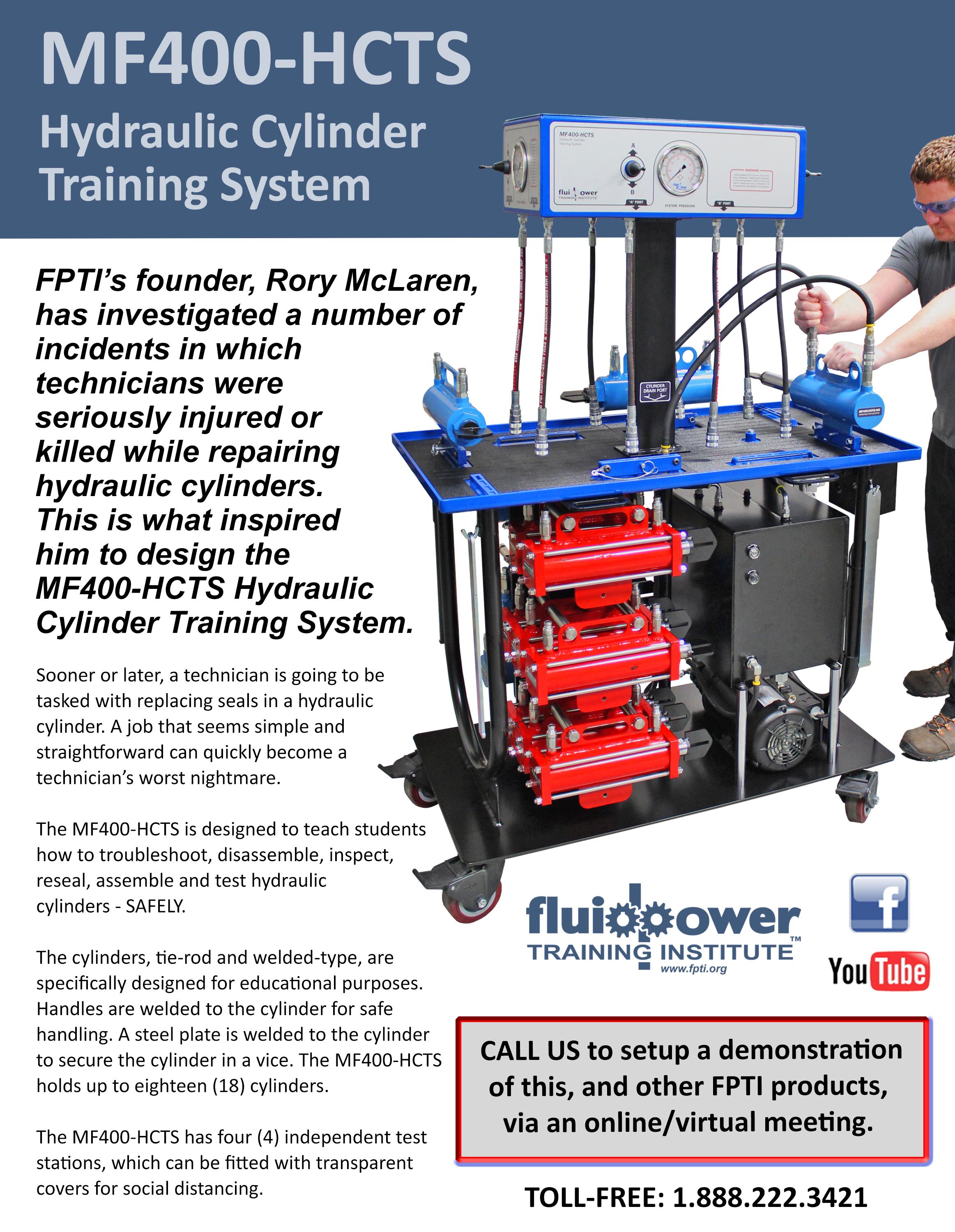
I never imagined that Land Speed Racing would turn into a teaching opportunity for me. Sure, there’s the automotive technology topics we discuss, but, beyond the nuts and bolts, the life lessons that are taught are priceless. I certainly had many life lessons taught to me in my first years of racing, and now it feels like it’s an obligation to help the younger generations through racing as well. Just like Charlie and Mike were an inspiration and mentors to me, I hope I can be the same for younger up and coming racers. I will never forget the road it took to get to where I am now. I still enter the Camaro under the name “Miller & Miller” just like Charlie used to. And when I get asked “who are Miller and Miller” boy what a long story it is.
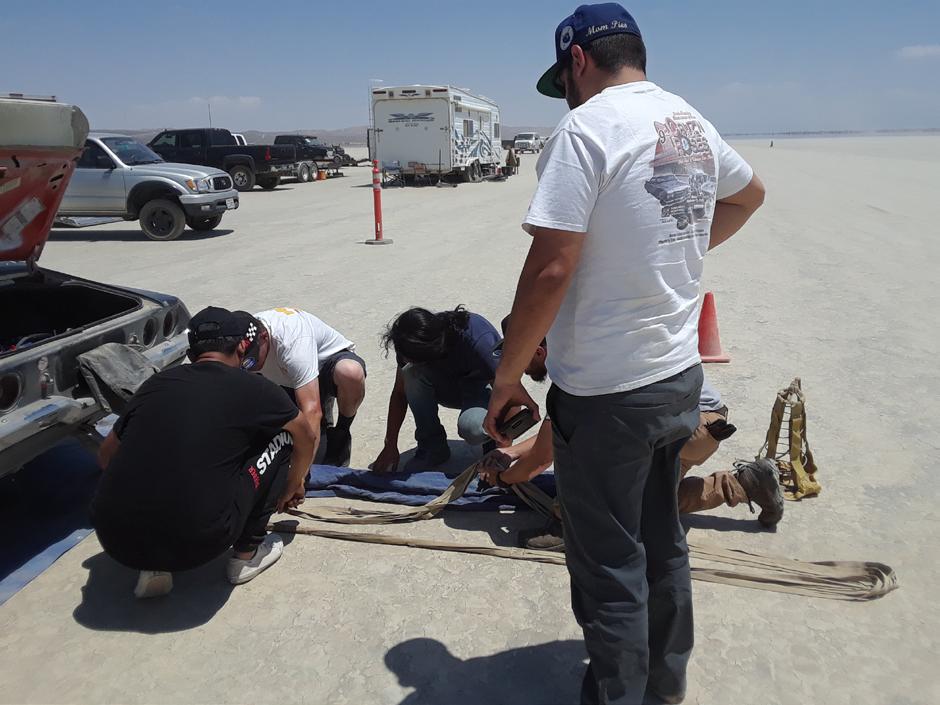
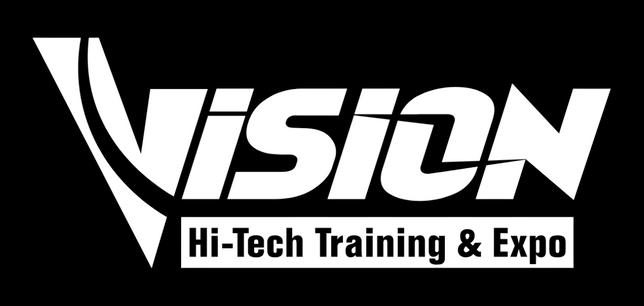

Packing a parachute is a great teaching tool on so many levels. Most drivers prefer to pack their own chute, as it is the primary method of slowing the cars down from high speeds where brakes are ineffective. If the chute fails, a driver who packed his or her own parachute has no one else to blame. But when one takes the time to teach chute packing to someone else, the student gets to master the technique while also learning about responsibility, trust, communication, safety, and even physics.
THANK YOU, Steve, for sharing your story with us and your passion with so many others!

As I share the possibilities of adding hybrid and electric vehicles to the curriculum with automotive instructors and administrators around the country, I get many questions on the subject of megohm meters and milliohm meters. These are not tools that are typically part of a standard automotive program inventory, however, as a program moves towards electrification, they will become as common as a 10mm socket. In this article I will highlight the use of these meters and specific vehicle or component testing. The goal of the testing is not to resolve a specific problem, but rather to demonstrate and better understand the operation of the meters.
I want to begin with the megohm meter. Its principal use is to measure resistance using a source voltage greater than the typical 9-volt battery found in a multimeter. On the hybrid and electric vehicle, it is used to identify problems related to a “loss of isolation” in the high-voltage circuits.

Caution: It is important that proper personal protective equipment be worn when using a megohm meter to test high-voltage circuits.
Most megohm meters are also able to perform the same functions of a typical multimeter. When making a megohm meter purchase decision, look for a meter that has a minimum CAT III 1000-volt rating. This will meet or exceed the requirements for every hybrid and electric vehicle currently in production. Do not modify the meter leads in any way, as this will nullify the minimum CAT III rating.
A “loss of isolation” fault typically sets when the control module detects a possible path to the chassis ground from either the positive or negative high-voltage circuit. As part of the diagnostic process, many manufacturers will have the technician place the megohm meter between the suspect circuit or component and chassis ground and check for continuity. Because a high-voltage circuit can jump to ground (arc-flash) through the air, the circuit is tested with a high source voltage. Most megohm meters have an internal capacitor that is charged to the specified voltage by the source battery and then discharged during the test. When performing the test, the one-hand method is recommended. (See Figure 1 – Megohm Meter)
An easy way to safely demonstrate the meter use with a group of students is first connect the meter between the chassis ground and something that is insulated (plastic or other non-conductive material). When the test is performed, the meter will indicate an almost infinite resistance. For the second part of the demonstration, move the meter lead to a conductive part of the chassis and perform the test a second time. The results will indicate little to no resistance.
Continued on Page 17
The milliohm meter is used to test circuits where the normal resistance is less than one ohm. Despite what is advertised, the typical multimeter is not accurate below one-ohm of resistance. When measuring most legacy vehicle circuits this is not a concern because the specifications for the circuit resistance is not less than one-ohm. However, if a measurement is being made on the stator windings of an electric motor in a hybrid or electric vehicle the specification will most likely be a very small range of milliohms.
(See Figure 2 – Milliohm Meter)
A milliohm meter may be battery powered, or it may have a 120 Volt AC power cord. The milliohm meter uses test leads with Kelvin clips and requires a calibration each time before use. Some measurements are so precise the meter and the components must be verified to be at room temperature before the measurement is made.
A fun way to demonstrate a milliohm meter is to use three pieces of standard 14-gauge stranded automotive wire; one 20-inches long, one 10-inches long, and one 1-inch long. First, measure each wire with a standard multimeter. Each wire, despite the difference in length, will measure the same. Second, measure each wire with the milliohm meter. Each wire will have a different resistance. For the last part of the demonstration, use the 20-inch wire and fold about one-half of the strands at each end out of the way (where they are not touching) and remeasure. The reading will be different than the previous reading of the same wire. What a great demonstration of a poor or damaged harness or connector!
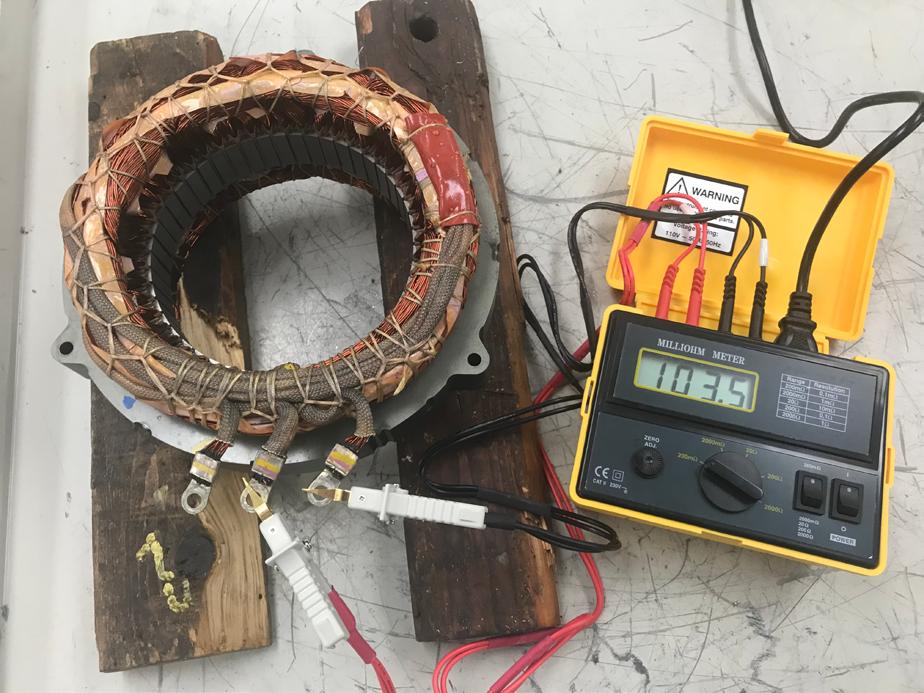
Neither of these tools is currently part of the standard workshop toolbox, and I only bring them out for the hybrid and electric class or to spice up the Electrical I class discussion on resistance. Even if you are not ready to add hybrid and electric vehicles to your curriculum, these tools are a great way to introduce the topic of high-voltage safety and to increase the learning on the topic of resistance.
I will finish this article with the same offer I make after each of my presentations. If you are interested in getting started and want more information, please feel free to reach out. I am more than willing to sit down in-person or online and share my experiences. Are you looking for a classroom textbook? Reach out to Pearson and ask for a review copy of the all-new Electric and Hybrid Electric Vehicle text that Jim Halderman and I co-authored. It is a comprehensive text covering all the latest information on the subject.



“All Girls Auto Know® (AGAK)” is not a line to an Alanis Morissette song, rather it is something much more important. It is The Southern Automotive Women’s Forum’s (SAWF) Middle school outreach program designed to introduce girls to the many options that are available with careers in Automotive and STEM (Science, Technology, Engineering, and Math). Each one-day event invites up to 300 middle school girls, as well as teacher/educator chaperones, to learn via standardized content that is structured to fit the needs of the event host and participating school systems.
In 2023, SAWF intends to have three events: one each in Alabama, Kentucky, and Tennessee. They have had events in every year since 2011 except for 2020 when COVID-19 put a halt to the planned AGAK programs
From their website: The Southern Automotive Women’s Forum is a 501(c)(3) nonprofit dedicated to the personal and professional advancement of women in the automotive industry. SAWF achieves this mission by collaborating with industry partners to create educational, mentoring and networking opportunities for its members. Our members serve as strong role models for one another and for young women of all ages who are interested in STEM with the hope that they will apply these skills to the automotive industry of the future. Since its inception in 2010, SAWF has also awarded over $401,000 in scholarship funds to young women beginning their careers in STEM and to women seeking to enhance their opportunities.
It is the Vision of SAWF to collaborate with companies and organizations by leveraging the knowledge and talents of women role models to foster a dynamic regional automotive community within the Southern states. SAWF provides scholarships, educational programs and mentoring to attract and retain women to this industry.
$2500 scholarship funding a 1-year NACAT membership and attendance to the annual NACAT conference.
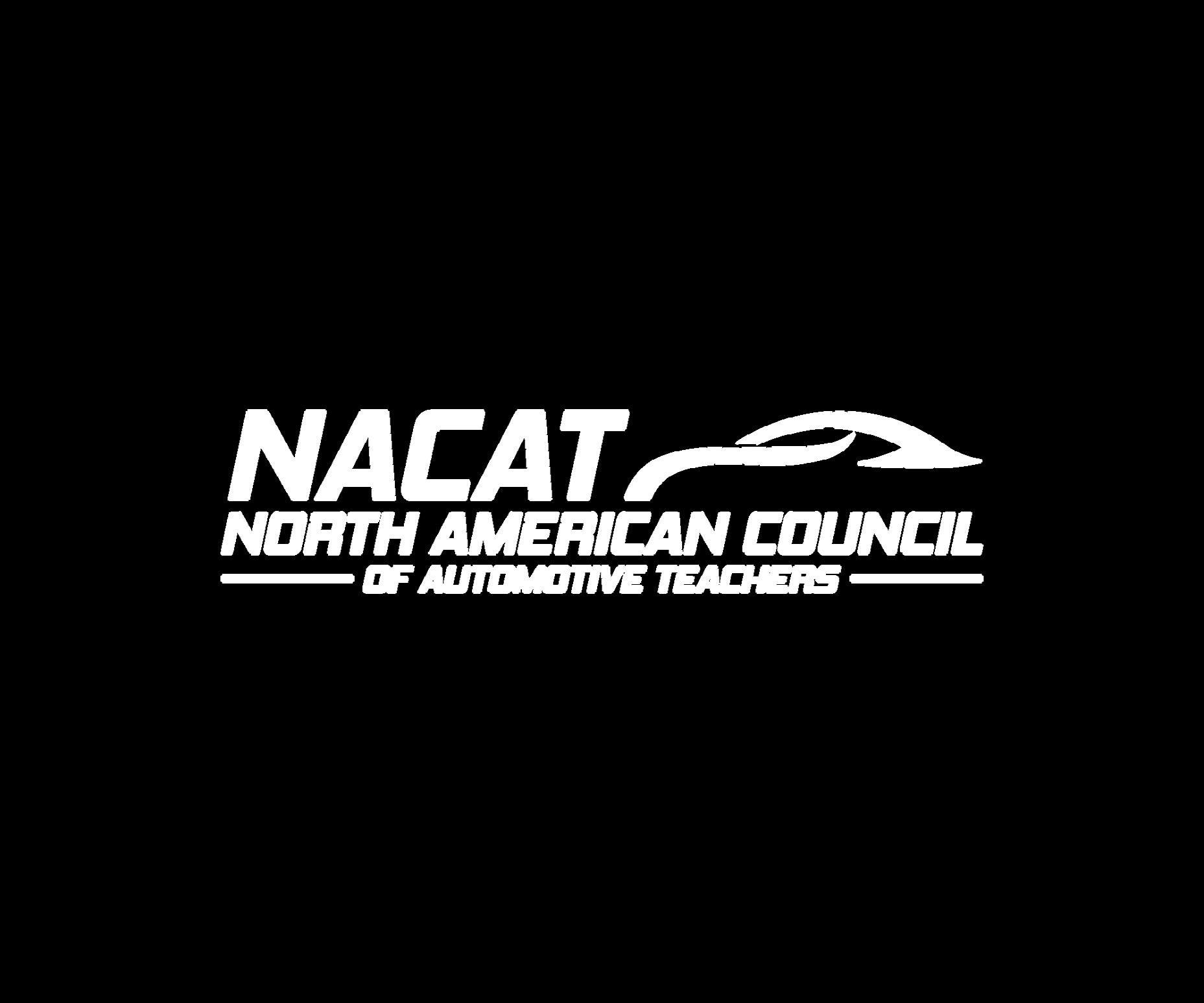


sponsored by


The 2023 SEMA Scholarship application period for students preparing for careers in the automotive or performance parts industries is now open and will run through March 1, 2023 Interested applicants can review and complete the scholarship application at www.sema.org/scholarships.
The SEMA Memorial Scholarship Fund offers financial assistance of up to $5,000 to foster future leaders and innovators in the automotive aftermarket industry. A loan forgiveness component is also available to employees of SEMA-member companies who have completed and are currently paying off a loan for a program of study at an accredited university, college, or vocational/technical school within the United States.
“Education can be expensive, but that shouldn’t limit students from getting ahead in their careers,” said Pamela Brown-Matthis, SEMA Director of Education. “There are so many career options in the automotive aftermarket, and it’s a thriving industry to be in. We encourage students who have a passion for cars to apply for a SEMA scholarship so that we can help jump-start their careers.”
The annual scholarship program is a cornerstone of SEMA’s efforts to support career development and access in the automotive industry. Scholarship winners will have the opportunity to attend the 2023 SEMA Show, providing unparalleled networking and education opportunities at the world’s largest trade show for the automotive aftermarket.
Applicants must be U.S. citizens 18 years or older and demonstrate a passion for automotive hobbies and careers. Scholarships are available in a variety of categories, including but not limited to accounting, sales, marketing, and engineering. Eligible students and SEMA-member company employees can apply until March 1, 2023.
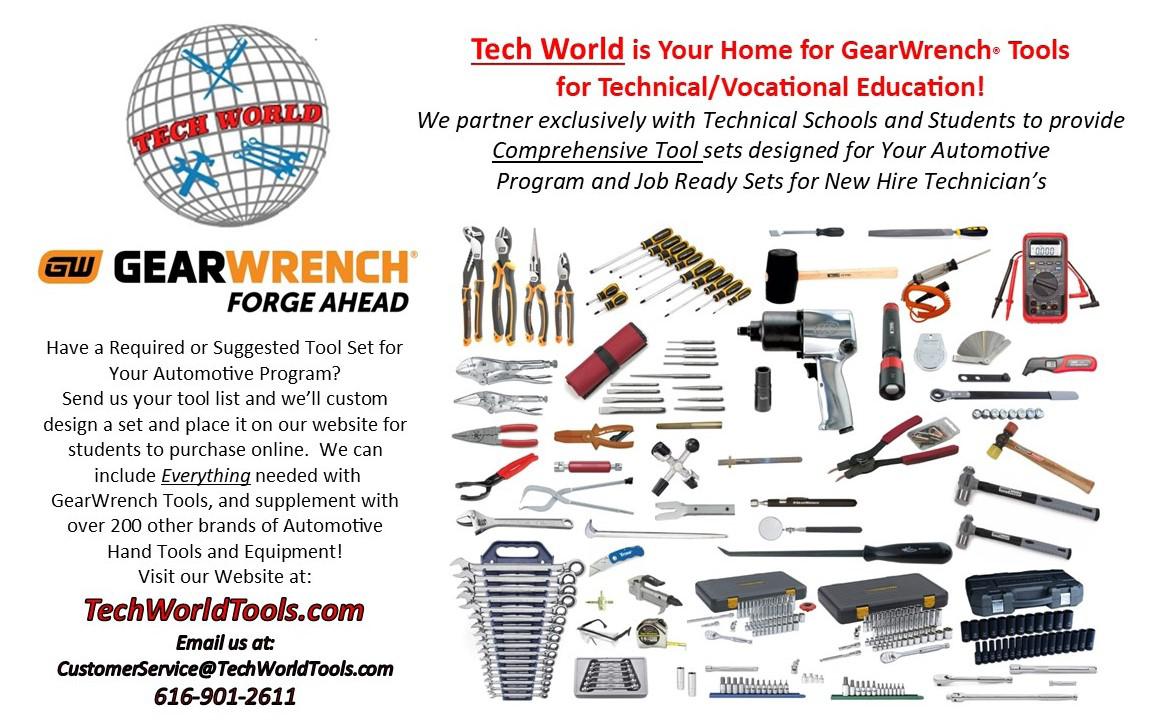
Grant funding can be used for your conferenceregistration!








Electrical Skill Development (ESD) provides an in-depth, hands-on study of automotive electricity and electronics by introducing electrical and electronic components mounted on submounts. Both serial and parallel circuits can be configured to perform the activities in the ESD courseware.


Specialized Circuits:
~ DC to AC voltage inversion
~ Clear relays (observe contact movement!)
~ Force sensitive resistor
~ DC motor generator
~ Precision temperature sensor
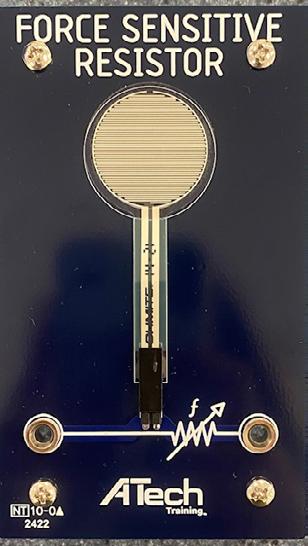
Features:

~ Optional submounts can be added to create customized circuits
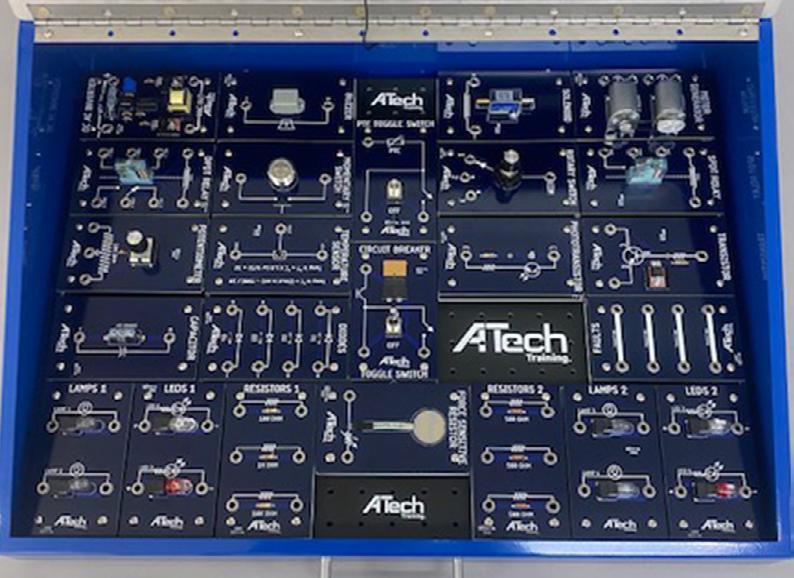


~ Courseware included: Student Manual and Instructor Guide





Current and new NACAT members are now eligible for a free semester of unlimited access for their entire class. Valued at $23/student and could be worth thousands for larger classrooms. One free semester per NACAT member
This question is often asked and can be difficult to determine
Automotive Student Testing is built to answer this question and offers so much more to you and your students Quickly and easily assess student understanding before, during, and after lessons. Turn your students into the best test takers by just assigning homework Students use their own smartphones and work at their own pace on their own time to complete assigned tests and quizzes.
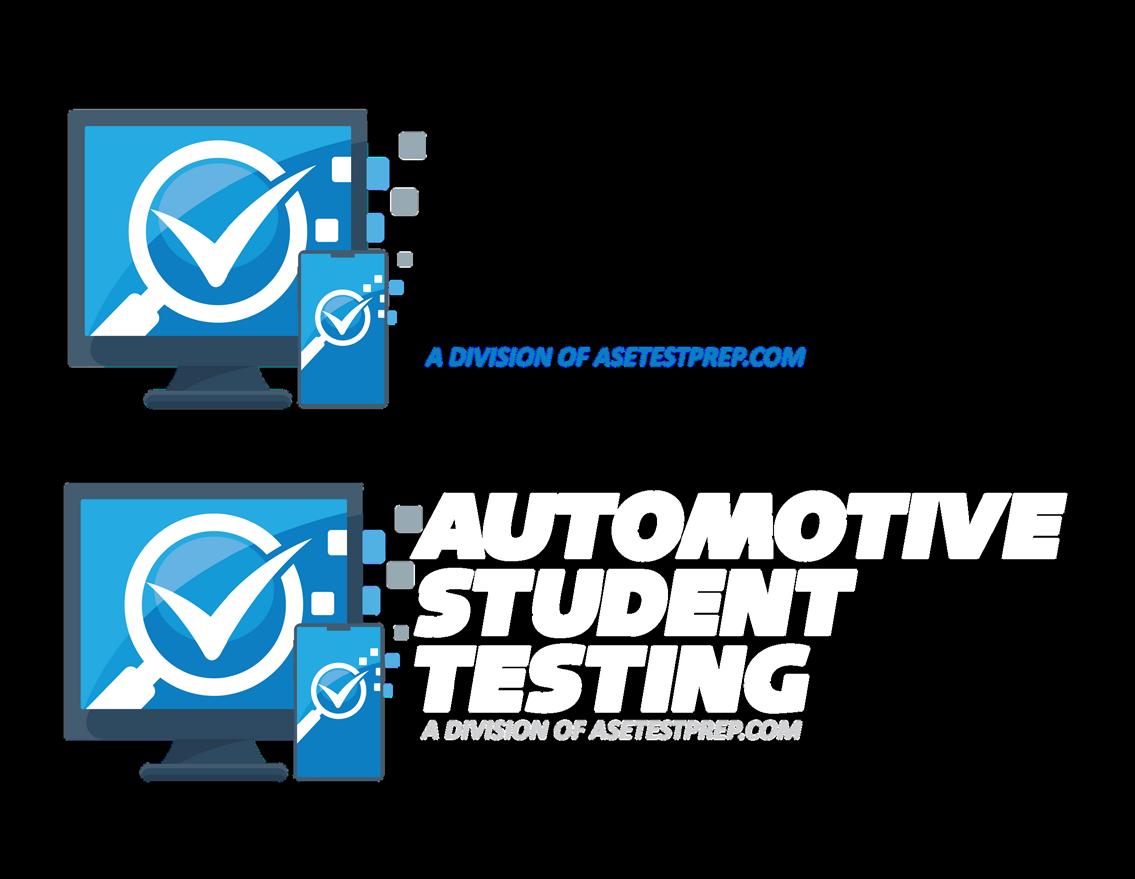
Become the school Superhero by turning out the best students the school has ever seen!
Current and new NACAT members now receive a $40 discount on any purchase. Even returning customers can take advantage of this offer. Prepare for your next ASE Certification Test the right way with ASE Test Prep. One discount per person.

To sign up for these incredible benefits, please visit link.nacat.org/automotivestudenttesting
If you are not currently a NACAT member, fill out a member application form by visiting link.nacat.org/join
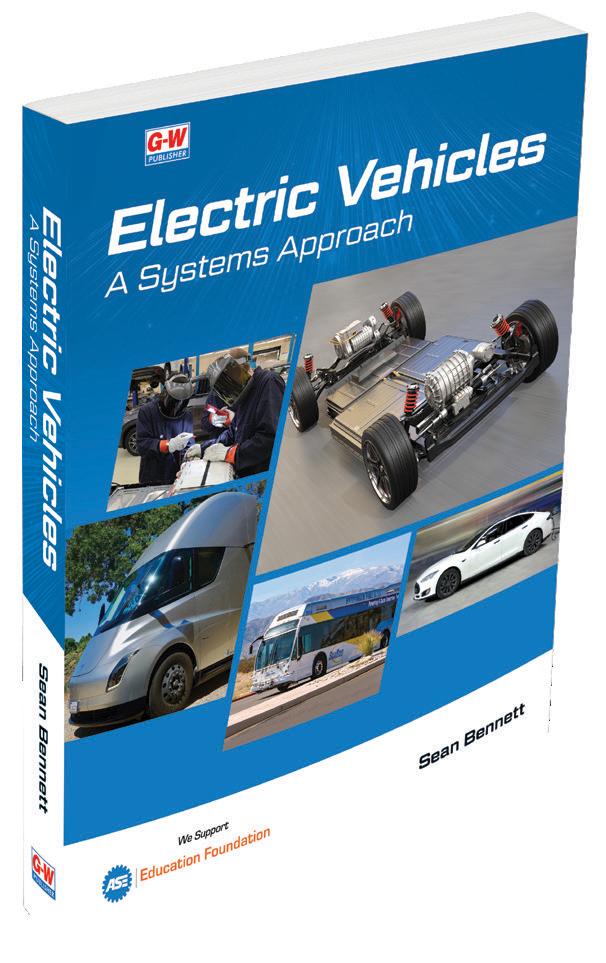
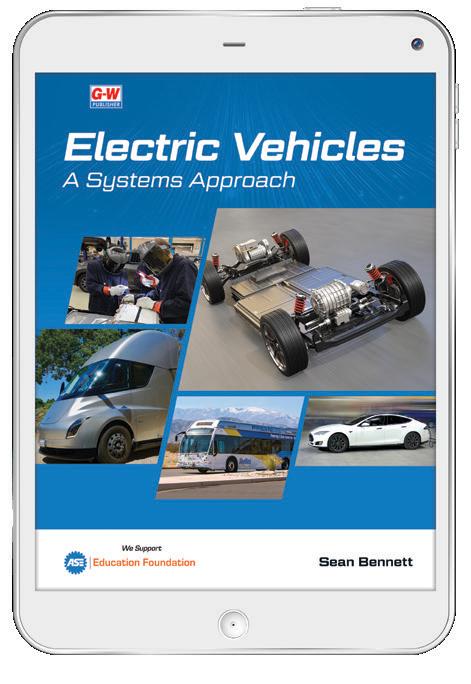
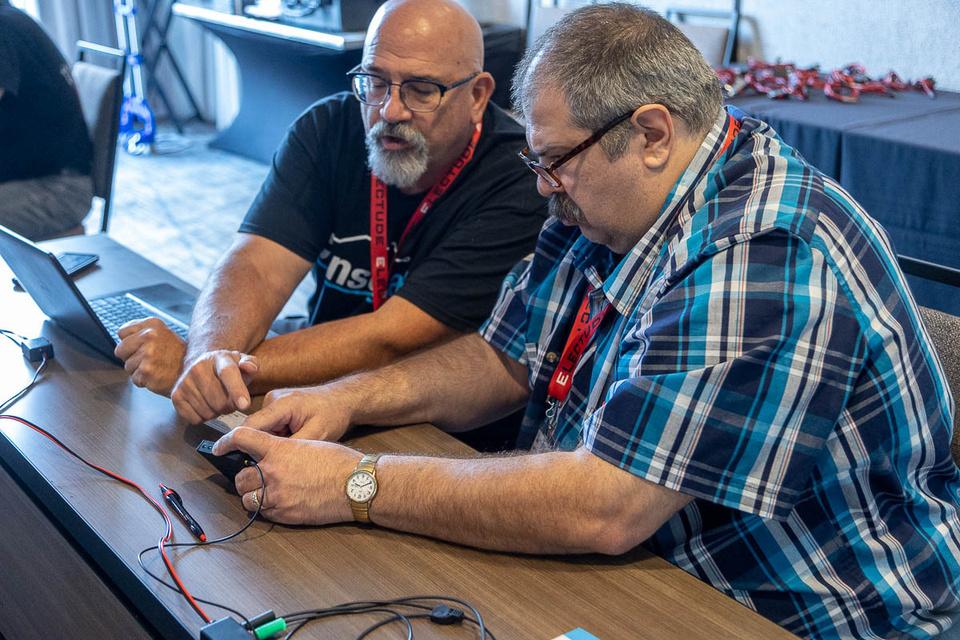
Tamber Nellinger (Chair) and Bonnie Millard (Vice Chair) will help us research and organize the family activities for our 2023 NACAT Conference held in Houston, Texas on July 10-13, 2023.



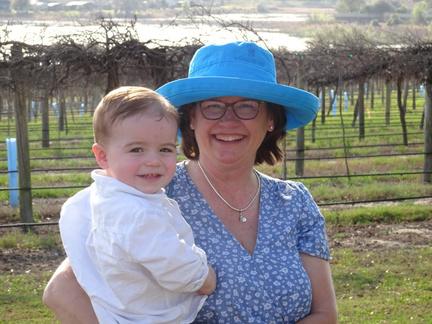
"We designed this course to simplify and illuminate a path to a career in automotive design. High-level training in this field isn't always easily accessible, but we've removed some of those barriers by offering the program at no cost and involving an esteemed lineup of contributors," said Yellowbrick's Justin Wolske.

The three modules are: Design Principles & History, Famous Case Studies, and Let's Draw. In the first module, students will study the automobile itself while looking at the chronology of design trends. The second module looks at iconic vehicle designs from the past, where styling professionals share their thoughts on vehicles such as the Tesla Model S, Delorean DMC-12, Lamborghini Gallardo, and the 2005 Ford Shelby Mustang. The third module involves working with Professor Roman Yneges from ArtCenter, who will share the core skills required to sketch auto designs. Key concepts include drawing classic and modern cars, perspective-based sketching, and circles and ellipses.
Each module is broken down into smaller lessons, ranging from 6-15 minutes. Students only need to provide sketching materials to participate in Module 3.
Please note that prospective students must be 13 to participate.
for being the new Chair and Vice Chair of the Families of NACAT committee!

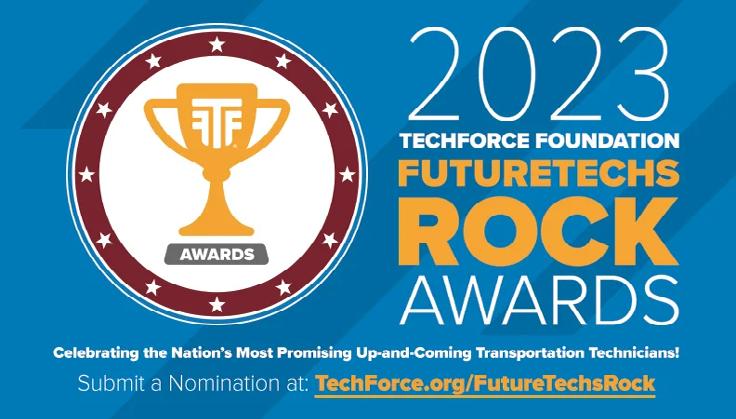
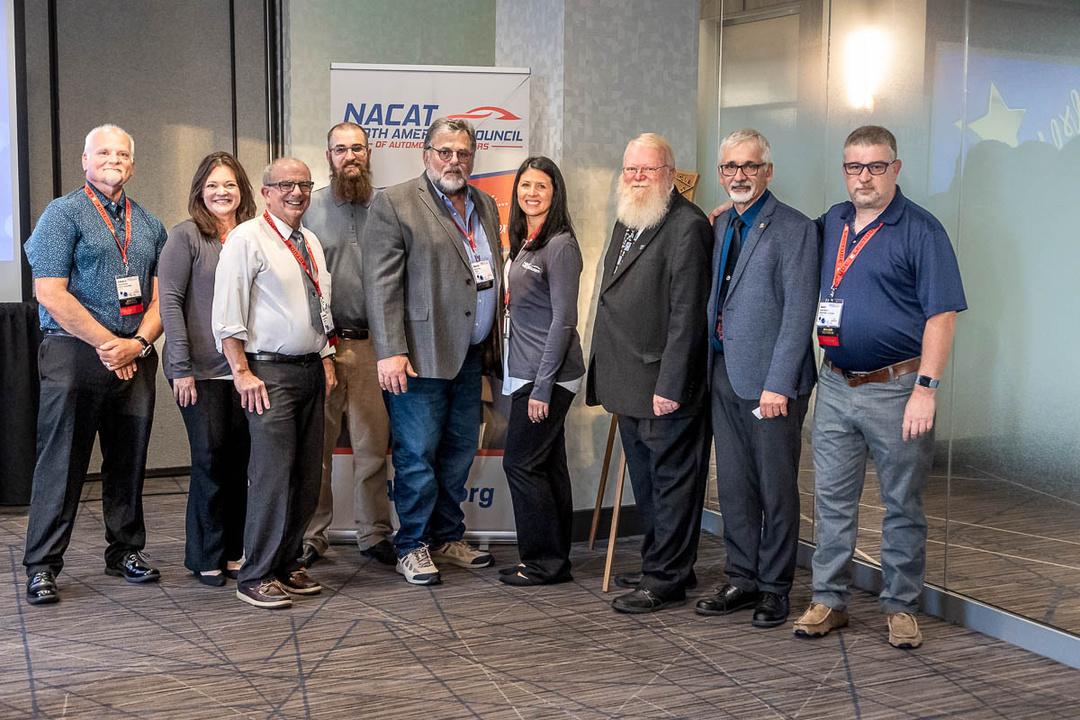
TechForce Foundation’s 5th annual FutureTechs Rock Awards season has begun. TechForce created this prestigious award to honor aspiring technicians and recognize students with a promising future in the transportation industry. The FutureTechs Rock Awards are accepting nominations through 5 PM PT, February 10, 2023. Nominate a technician student today.
Over $10,000 in scholarships and prizes will be awarded:
Each of the ten (10) Category Winners, as selected by a panel of industry judges, will receive prizes valued at nearly $700 including training materials, supplies and products from TechForce partners including NISSAN, Advance Auto Parts, CRC Industries, Cengage, AutoZone, New Ford Tech, Volvo, WD-40 Company and Snap-on Industrial.
The Grand Prize Winner, as chosen by popular vote, will also receive a $1,000 TechForce scholarship and additional prizes valued over $2,000 from partners including NISSAN, Advance Auto Parts, CRC Industries, Cengage, AutoZone, New Ford Tech, WD-40 Company and Snap-on Industrial.
Students will be considered for one of ten categories depending on their academic focus including Automotive, Aviation, Collision Repair, Diesel On-Road and Off-Road, Marine/Watercraft, Motorcycle/ATV, Motorsports, Restoration and Welding/CNC.
A panel of industry experts will select one winner from each of the ten categories. The Grand Prize Winner will be selected from the slate of Category Winners via a People’s Choice Public Vote, to be held February 27 – March 3, 2023.
Nomination and eligibility requirements can be found here

in serving on the NACAT Board or a NACAT Committee?




C l i c k h e r e t o s i g n u p f o r t h e

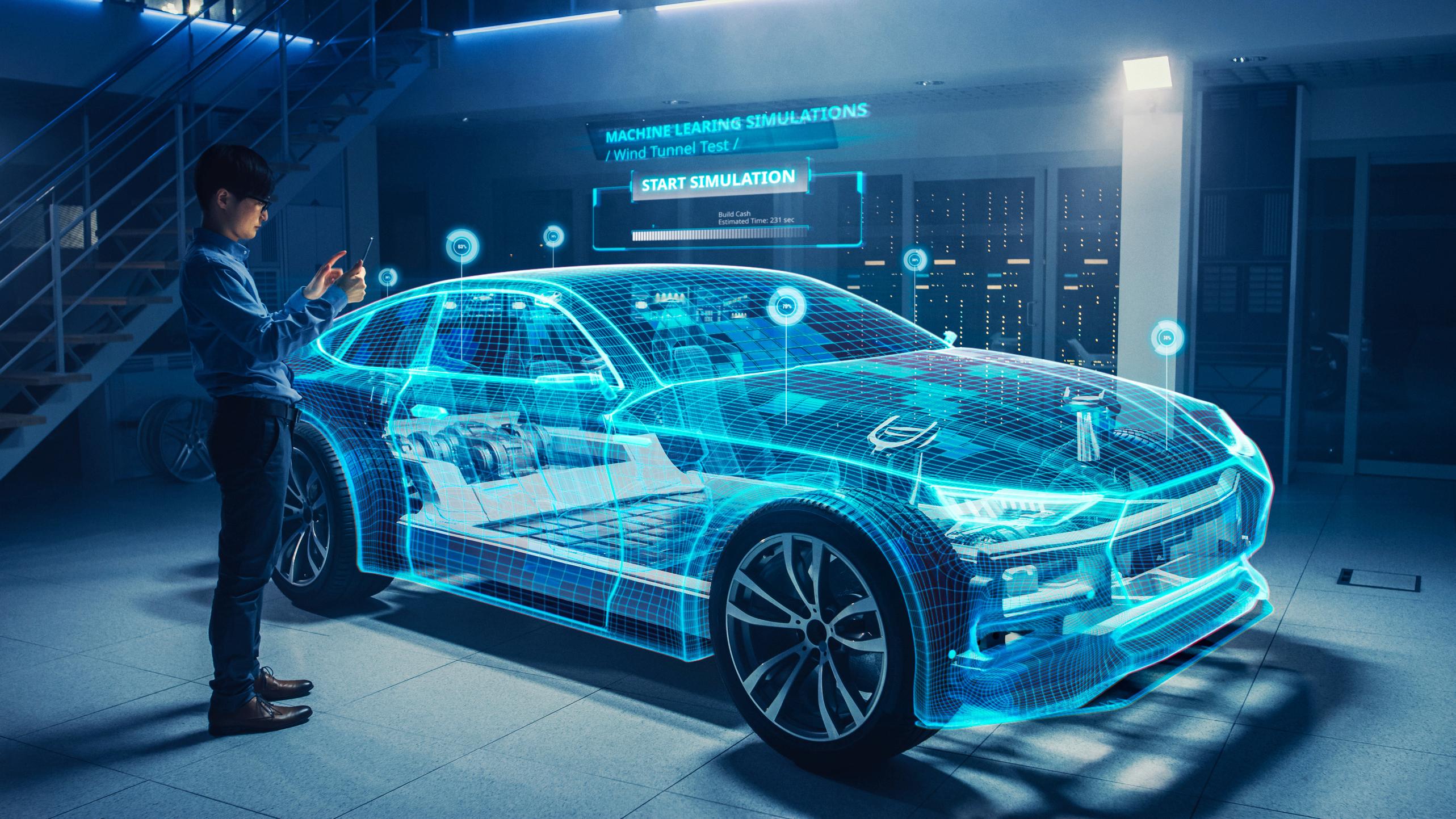
N A C A T e N e w s l e t t e r





